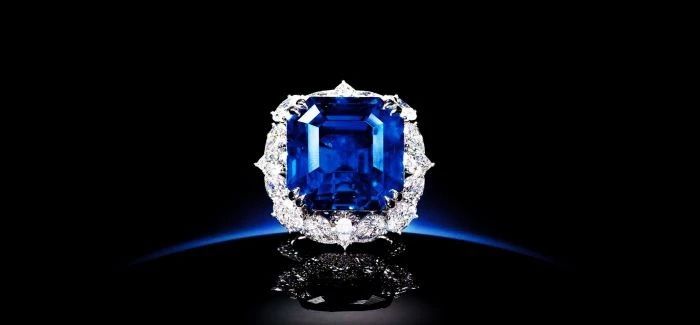Among the world’s five most precious gemstones, ruby ranks second, just after diamond. Sapphire, often referred to as the “sister gem” of ruby, ranks third.
Since ancient times, sapphire has held an unparalleled position in the history of global jewelry.
Sapphire is deeply loved by royalty and nobility, and it is considered a treasured heirloom by the British royal family. Its mysterious, melancholic, and brilliant luster exudes a cold yet luxurious beauty that has fascinated gemstone lovers throughout the ages.

Sapphires are extremely precious and expensive. Princess Kate’s sapphire engagement ring is currently valued at around $500,000 and is ranked among the world’s 20 most famous engagement rings.
Compared with natural sapphires, lab-grown sapphires are much more affordable. A high-quality lab-grown sapphire ring can cost just a few thousand dollars.

With technological advancements, the methods for cultivating sapphires in laboratories have become increasingly sophisticated.
The Best Method for Growing Sapphires in the Laboratory
Currently, there are several methods used in laboratories to create gem-quality corundum—sapphire.
The most commonly used methods are the flame fusion method, flux method, and hydrothermal method.
Among them, the flame fusion method is the most cost-effective way to create any gemstone, while the hydrothermal method is the most expensive and closely mimics the natural formation process of sapphires.
In the hydrothermal method, minerals are subjected to high temperatures and pressures inside a kind of “pressure cooker,” which effectively simulates the natural environment in which sapphires are formed.

Are Lab-Grown Sapphires Real Gemstones?
Natural vs. Lab-Grown
- Chemical Composition:
Both are primarily composed of Al₂O₃. - Mineral Type:
Both belong to the same mineral—corundum. - Crystal Structure:
Both belong to the trigonal crystal system.
Chemically and physically, lab-grown and natural sapphires are made of the same material. They have the same atomic structure and crystal habits. Gemological laboratories recognize both lab-grown and natural sapphires as forms of corundum. Lab-grown sapphires are indeed real gemstones.

